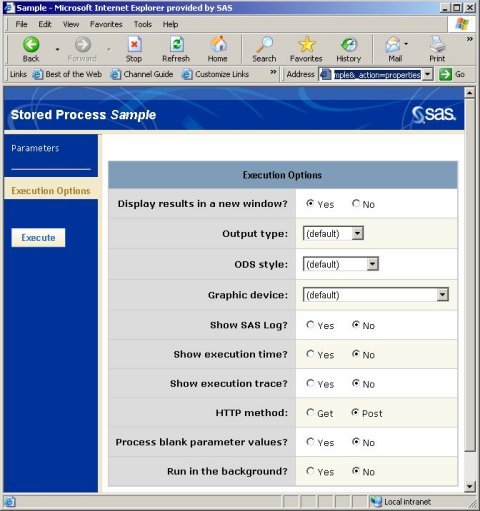
.png)
To save your settings as a template, right-click on the Copy Files task within your process flow and select Create Task Template. You can create an instance of the task that is useful in one process, then save those task settings to your personalized set of Task Templates that you can use in another process or even in another project. The Copy Files task also supports a standard SAS Enterprise Guide feature: Task Templates. Use a SAS program to determine the files you need to copy earlier in the process, assign that value to a macro variable, and then have the task "dynamically" select the correct files when it's time to copy them. Second, you can use SAS macro variables and expressions to specify any part of the source file names or destination folder. A question mark (?) matches any single character that occupies that position in the file name. An asterisk (*) matches all characters, in any number, before the next non-wildcard character. First, you can use wildcard characters to match on multiple file names. The Copy Files task supports two features that allow you to copy multiple files with a single step.

Again, this is similar in concept, but since there is only one SAS session in play here, we need to use a different mechanism. Some readers might be familiar with SAS/CONNECT Data Transfer Services (PROC UPLOAD and PROC DOWNLOAD), which allows you to transfer files between two SAS sessions. It is similar in concept to an FTP process, except that this transfer operation uses your already-existing connection to a SAS Workspace and does not require a separate application. And you can download files from your remote SAS Workspace to a folder on your local PC.
#How to download sas stored process results Pc
You can upload files from your local PC to the remote machine where your SAS Workspace is running. The Copy Files task allows you to capture file transfer steps within your SAS Enterprise Guide process flow. Most recently, I added a link to a video tutorial about the Copy Files task. It's been updated periodically with new information.

Note: This article was originally published in 2012. I give you: the Copy Files task for SAS Enterprise Guide. Also, SAS Enterprise Guide has a few focused tasks that can "move" files for you under the guise of "import" and "export" steps.īut there isn't a general method to copy any file you want from your PC to the SAS Workspace, or from the SAS Workspace to your PC. These mechanisms allow your local SAS Enterprise Guide and your remote SAS to "see" a shared location on the network. There are some strategies that help, including mapped drives, UNC paths, and network shares via a mechanism like Samba. For example, do you have Excel files on your PC to import using PROC IMPORT? Does your SAS program create output that you have to save on your PC? How will you get these files to where they need to be? If you're accustomed to "PC SAS" running all on your local box, you might be forced to rethink a few of your processes. The SAS Workspace session (which accesses data and cranks through your analysis) runs over there, on a remote machine. The SAS Enterprise Guide application runs here, on your desktop.

One of the problems that trips up experienced SAS users when they begin to use SAS Enterprise Guide is a result of simple geography.


 0 kommentar(er)
0 kommentar(er)
